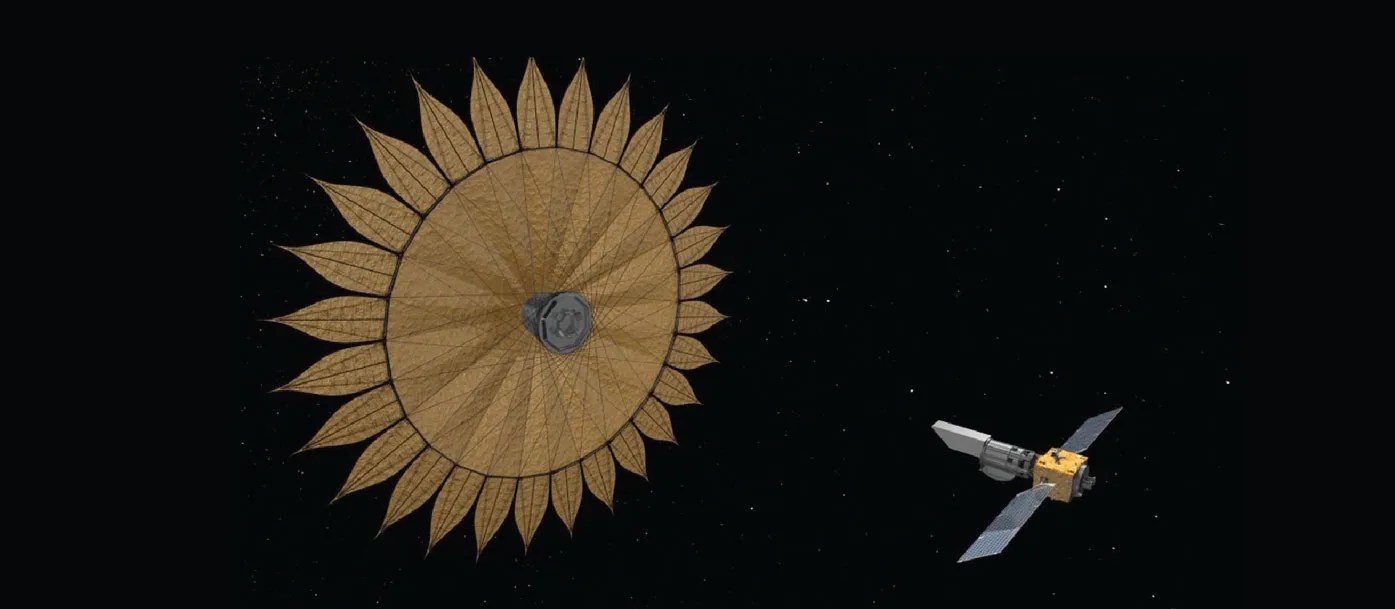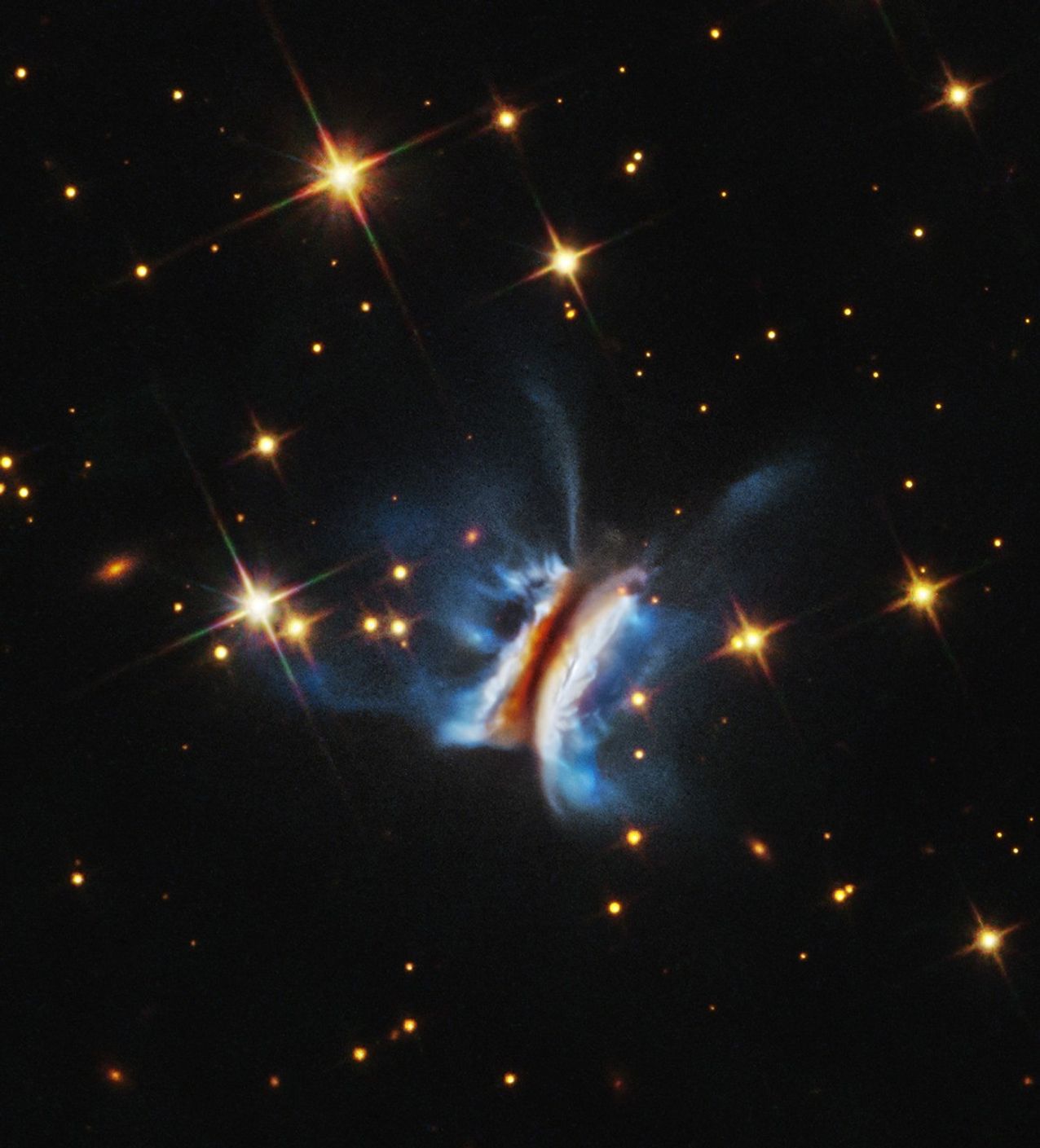Technology Development: Currently, astronomers can investigate Earth-sized exoplanets using only indirect methods such as detecting the changes in starlight as a planet passes in front of its star. The starshade (also known as an external occulter) is a spacecraft that will enable telescopes in space to take pictures of planets orbiting faraway stars. The starshade is designed to fly in front of a telescope and block the immense glare from a star’s light before it enters the telescope, allowing the planet’s reflected light to pass through and be collected. Models predict the starshade can achieve the required 10-10 contrast levels required to detect Earth-sized planets in the habitable zones of their stars. To successfully achieve starlight blocking, the starshade must unfurl and expand in space to almost the size of a baseball diamond (34 m diameter). The starshade’s razor-sharp petals redirect the effects of diffraction—the bending of starlight around the petal edges producing unwanted glare—and create a dark shadow for the trailing telescope to fly in. The starshade and telescope are separated by as much as 50,000 km—almost four Earth diameters.
Impact: The starshade and the coronagraph (also known as an internal occulter) are the two technologies NASA intends to advance to enable the first image of an Earth-like planet (for more information on coronagraph technology, see the entry on the Wide-Field Infrared Survey Telescope [WFIRST] coronagraph on page 8). Achieving the detection sensitivities required to image exo- Earths and look for evidence of life in their atmospheres is very difficult. Researchers do not know enough at this time to decide which approach will be more successful, so it is advantageous for NASA to pursue both technologies to learn more. By blocking a star’s light outside of the telescope, rather than on the inside, the starshade concept significantly reduces the cost and complexity of the trailing telescope. In fact, the starshade is compatible with any type of future visible and near infrared telescope mirror—an on-axis monolith like the 2.4-m WFIRST or a large multisegmented mirror like the 10-m-class Large Ultra-Violet Optical Infrared (LUVOIR) concept. The starshade also offers the opportunity to be launched separately, and can potentially rendezvous at a later date with any starshadecompatible telescope.
Status and Future Plans: Scaled prototypes of the starshade petals, expandable inner disk, and opaque origami shield have already been produced through NASAfunded SAT awards to Princeton University and JPL teams. Optical demonstrations by Principal Investigators (PIs) from industrial partner Northrop Grumman were conducted in 2015 across a 2-km stretch of dried lake bed in the Nevada desert. These demonstrations have helped engineers understand the starshade’s capabilities. A second optical demonstration effort began in 2015 with the assembly of an enclosed 78-m testbed at Princeton University; first light is scheduled for the spring of 2016.
Sponsoring Organization: This technology is currently being funded through the Astrophysics Division’s SAT program and Exoplanet Exploration Program. The starshade development effort is led by NASA JPL, PI Jeremy Kasdin at Princeton University, and PI Tiffany Glassman at Northrop Grumman Corporation.



































